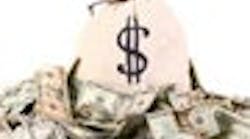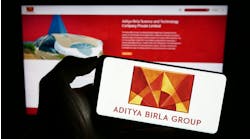Politics is about what's desired. Science is about what's possible. Engineering is about what's profitable. Without profit, our employers don't need us. If a plant becomes unprofitable the simplest and safest step is to shut it down.
Plant modifications -- to improve safety, environmental performance or product quality, to adapt to changing feeds or demands, or to meet other aims -- can impact profitability. We must keep economics in mind at all times when altering a plant.
Profitable modifications often relate to where a plant is in its lifecycle and so go through a series of stages: experience, innovation, expansion and replacement.
Experience. We face many unknowns with a new plant. After all, most are unique creations. The number of plants of a given type rarely is numerous enough to allow "standard" designs. Even nominally "identical" plants often must contend with different local conditions (climate), market needs, staff capabilities and other factors. Experience reveals the limitations and benefits of a specific plant.
We usually can build upon accumulated experience to reduce costs and improve operation. But that requires that we truly understand the plant. We must pay attention to what works and what doesn't and carefully apply our knowledge of engineering fundamentals to grasp what the plant does and why.
At this stage we often can achieve benefits at relatively low cost by focusing on a group of factors:
• fat in original equipment and process design — safety factors frequently are added at multiple levels;
• operating experience in control and how closely units can run to control margins;
• capacity versus flexibility limits in equipment; and
• proven pinch points in the plant and how to get around them.
The strategy is to remove minor bottlenecks and take advantage of demonstrated capacity in systems that have an operating margin.
Innovation. Once we've used our experience and minor modifications to make fuller use of the inherent capabilities of the process and equipment, modifications become more challenging and expensive. To keep investment down we must look at different ways of doing things. We must investigate process modifications and design innovations — with the idea of achieving improvements while keeping plant infrastructure changes to a minimum.
At this stage we may gain benefits, e.g., from altering process configuration, switching catalysts and upgrading equipment.
Remember that multiple factors often can support investments. A prime example is energy efficiency projects. Historically, it's been nearly impossible to justify such projects based only on energy savings. However, greater energy recovery may allow for plant changes -- which, while typically requiring additional capital, may make overall payback more attractive -- and obviate investment in auxiliary systems such as for cooling water supply.
The long-term survival of a facility often hinges on the ability of personnel to keep a plant in the first two stages of its lifecycle. That demands experienced engineers because they can find new ways to innovate. Experienced engineers understand plant limits better and comprehend what changes will work and why. Finding and taking advantage of well hidden but profitable opportunities require both process and equipment knowledge. Institutional failure to build and guard this knowledge is a key factor in decline of operating facilities.
Expansion. Eventually we will have removed all the original fat and made the low-cost changes. At that point the right modification may involve "a bigger hammer" -- i.e., replacing equipment with larger versions or adding units in parallel.
At this stage expenses start to spiral up. Infrastructure costs become important. In many plants, piping and utility system changes can dominate the cost for adding or replacing equipment. The tab for the equipment itself becomes a minor factor.
Fundamental economic questions get asked. Investment costs per unit of production often exceed those for a new plant. However, the changes still may make sense because the base plant asset already has been paid for. In addition, maintenance requirements for existing equipment often can influence the decision. The extra costs for improvements may look a lot more attractive when installed units otherwise require repair or replacement.
In the expansion phase the facility's future becomes uncertain. Changes require high costs. Competition with newer facilities becomes ever more difficult.
Replacement. At the final stage the cost-to-capacity or cost-to-improvement ratio becomes so high that a new plant offers important strategic advantages. Building it in a different location may reduce transport costs. It may enable effective integration of new equipment, processes and control schemes for maximum benefit. It may provide maintenance, environmental and safety improvements as well as other significant benefits. The plant gets replaced.
So, the lifecycle starts all over again.
Andrew Sloley is a Chemical Processing Contributing Editor. You can e-mail him at [email protected].


